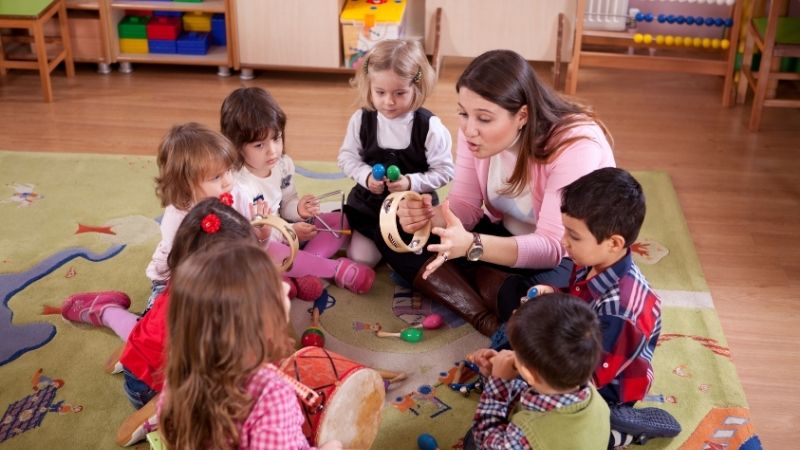
The article 'Immersive Worlds of Learning: Exploring Virtual Reality in Education' seeks to comprehensively investigate the expansive realms of VR classroom experiences, the potential of immersive learning, and the unique elements of VR field trips.
Moreover, it aims to delve deeply into the intricacies of 3D simulations and VR study aids, providing an extensive analysis of their interdisciplinary applications and advantages within the educational sector.
This research-based article employs an objective and informative academic style, catering to an audience seeking unbiased information and intellectual stimulation.
Key Takeaways
- VR classroom experiences enhance student engagement and create a sense of presence and immersion.
- VR field trips provide interactive learning opportunities and enhance student engagement and retention.
- 3D simulations and VR study aids offer personalized and immersive learning experiences.
- VR in education revolutionizes teaching methods, improves knowledge acquisition, and fosters critical thinking skills.
VR Classroom Experiences: Immersive Learning in Action
VR classroom experiences provide an immersive learning environment that allows students to engage with educational content in a unique and interactive manner. Virtual reality integration in the classroom has gained significant attention due to its potential to enhance student engagement.
Research suggests that VR technology can create a sense of presence and immersion, making the learning experience more memorable and meaningful for students. This level of engagement can lead to increased motivation, active participation, and deeper understanding of the subject matter.
By simulating real-world scenarios or creating virtual environments, VR enables learners to explore complex concepts and develop critical thinking skills. The use of virtual reality in education has shown promising results in various disciplines, from science and mathematics to history and literature.
Transitioning into the subsequent section about 'unleashing the potential: the power of immersive learning,' virtual reality provides a platform for educators to unleash new possibilities for transformative educational experiences.

Unleashing the Potential: The Power of Immersive Learning
Unleashing the potential of immersive learning involves creating an environment that fosters active engagement and deep understanding. Virtual reality (VR) has emerged as a powerful tool in education, offering unique benefits for language learning and enhancing critical thinking skills. Here are four ways in which VR enhances the learning experience:
Real-world context: VR provides learners with simulated environments that mimic real-life situations, allowing them to practice language skills in a meaningful context.
Multisensory experience: By engaging multiple senses, such as sight and sound, VR creates a more immersive learning experience that helps learners retain information better.
Personalized feedback: Through interactive activities and simulations, VR can provide immediate feedback to learners, helping them identify areas for improvement.
Increased motivation: The interactive nature of VR captivates learners' attention and increases their motivation to actively participate in the learning process.
With these advantages in mind, it is important to explore beyond the classroom and delve into the unique aspects of VR field trips.
Beyond the Classroom: Exploring the Unique Aspects of VR Field Trips
By examining the intricacies of simulations and studying the aids that VR provides, this article aims to showcase the interdisciplinary uses and benefits of virtual reality in the educational sector.

One particular aspect worth exploring is the unique experience offered by VR field trips. Virtual exploration through these excursions allows students to expand their horizons beyond the confines of a traditional classroom setting. Through immersive technology, students can visit historical sites, explore distant planets, or even dive into underwater ecosystems without leaving their seats.
These engaging experiences provide interactive learning opportunities that enhance student engagement and retention. By enabling students to actively participate in their own education, virtual reality field trips offer a novel approach to experiential learning that goes beyond traditional methods.
As educators continue to embrace technology as a tool for enhancing learning outcomes, virtual reality field trips stand out as an innovative and effective way to engage students in meaningful educational experiences.
The Intricacies of 3D Simulations: Enhancing Learning With Virtual Reality
The intricacies of 3D simulations can greatly enhance the learning experience through the use of virtual reality technology. Here are four ways in which these simulations can enhance engagement and have practical applications:
Immersive experiences: 3D simulations provide an immersive environment that allows learners to interact with objects, scenarios, and concepts in a realistic manner. This helps to create a deeper understanding and connection to the subject matter.
Visualizations: Virtual reality enables the visualization of complex concepts that may be difficult to comprehend using traditional teaching methods. It allows learners to explore abstract ideas in a tangible way, leading to better comprehension and retention.
Experiential learning: Through 3D simulations, learners can engage in hands-on experiences and practice real-world skills within a safe and controlled environment. This promotes active learning and facilitates skill development.

Personalization: Virtual reality provides opportunities for personalized learning by adapting content based on individual needs and preferences. Learners can navigate at their own pace, focus on specific areas of interest, and receive immediate feedback.
With its ability to enhance engagement and offer practical applications, it is clear that 3D simulations hold great potential for revolutionizing education.
Transitioning into the subsequent section about 'vr study aids: revolutionizing education with immersive technology', we will now explore how virtual reality is transforming traditional study materials into interactive and immersive experiences for students.
VR Study Aids: Revolutionizing Education With Immersive Technology
Revolutionizing education with immersive technology, VR study aids offer unique and interdisciplinary uses and benefits within the educational sector. These study aids provide interactive engagement and personalized learning experiences for students. By creating virtual environments that simulate real-world scenarios, VR study aids allow learners to actively participate in their education through hands-on activities and simulations.
One of the key advantages of VR study aids is the ability to create personalized learning experiences. Students can explore concepts at their own pace, tailoring the content to their individual needs and preferences. This level of customization promotes deeper understanding and retention of information.
Additionally, VR study aids foster interactive engagement by providing a more immersive learning environment. Through the use of headsets and controllers, students can interact with virtual objects, experiment with different scenarios, and receive instant feedback on their actions.
Research has shown that utilizing VR study aids in education enhances student motivation, improves knowledge acquisition, and develops critical thinking skills. By integrating this technology into classrooms, educators can tap into its vast potential to revolutionize teaching methods and create more engaging learning experiences.

Interdisciplinary Uses and Benefits: Harnessing the Power of Virtual Reality in Education
Interdisciplinary uses and benefits of virtual reality in education encompass a wide range of applications and potential advancements.
The integration of virtual reality technology in educational settings has enabled the development of collaborative projects, fostering teamwork through immersive experiences. Students can now work together in virtual environments, regardless of their physical locations, facilitating collaboration and communication skills.
Additionally, virtual reality allows for experiential learning, enhancing understanding through immersive simulations. By engaging students' senses and providing them with realistic scenarios, virtual reality enables a deeper level of comprehension and retention of knowledge.
Furthermore, the use of virtual reality in education has shown promise in providing tailored learning experiences to cater to individual student needs. Virtual reality study aids can be personalized to support students' unique learning styles and preferences, promoting effective learning outcomes.
Frequently Asked Questions
What Are Some Practical Examples of VR Classroom Experiences and How Do They Enhance Learning?
Practical examples of VR classroom experiences include virtual field trips, simulations for science experiments, and historical reenactments. These immersive learning experiences enhance learning by providing students with a more engaging and interactive educational environment.
How Can Immersive Learning in Virtual Reality Be Applied to Different Subjects and Disciplines?
Immersive learning in virtual reality has diverse interdisciplinary applications across subjects. It enhances education by providing experiential and interactive experiences, improving engagement, retention, and understanding. Its benefits include increased motivation, critical thinking skills, and real-world problem-solving abilities.
What Are Some Challenges or Limitations of VR Field Trips and How Can They Be Overcome?
Challenges in implementing VR field trips include the need for expensive equipment and potential motion sickness. These limitations can be overcome by providing affordable VR options, ensuring proper training, and designing experiences with minimal motion to reduce discomfort.

What Are Some Specific Ways in Which 3D Simulations Can Be Used to Enhance Learning?
Incorporating 3D simulations in education has shown to enhance learning outcomes. Students benefit from increased engagement, improved problem-solving skills, and better retention of information. Virtual reality applications offer unique opportunities for immersive and interactive learning experiences.
How Do VR Study Aids Compare to Traditional Study Materials and What Are Their Advantages?
VR study aids offer advantages over traditional materials, enhancing learning by providing immersive and interactive experiences. They engage multiple senses, promote active learning, improve understanding and retention of information, and facilitate real-world application of knowledge.
 Careers in EducationElementary EducationHigh School EducationEducational TechnologyTeaching StrategiesSpecial EducationPrivacy PolicyTerms And Conditions
Careers in EducationElementary EducationHigh School EducationEducational TechnologyTeaching StrategiesSpecial EducationPrivacy PolicyTerms And Conditions
